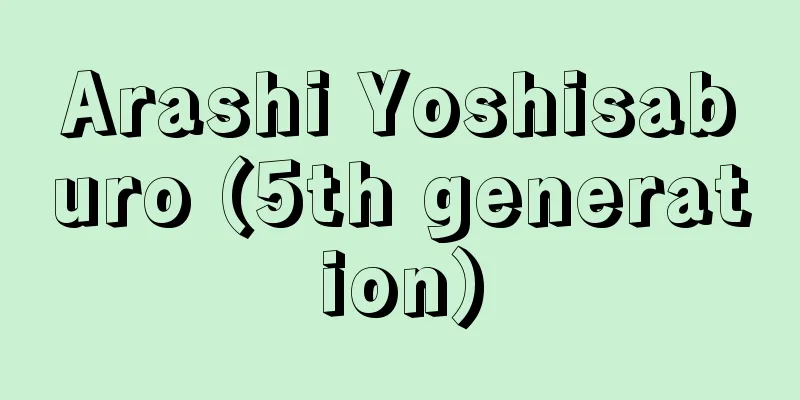Emperor Tenmu

|
The 40th Emperor (reigned 673-686). Son of Emperor Jomei. His mother was Empress Kogyoku, making him Emperor Tenji's younger brother. His given name was Prince Oama, and he was the father of the princes Kusakabe, Otsu, Takechi, and Toneri. Although he was overshadowed by his older brother Emperor Tenchi's achievements during the first half of his life, he seems to have worked with him for a large part of his life. When his brother ascended to the throne in 668 (the 7th year of Emperor Tenchi's reign), he assisted in politics as the crown prince. However, when Emperor Tenchi's son Prince Otomo came of age, the two came into conflict over the issue of the succession to the Imperial throne. In 671, Prince Otomo became the Prime Minister, but Prince Oama was alienated from the government, and the conflict between the two became decisive. In the autumn of that year, the emperor, who was bedridden, tried to entrust his future affairs to Prince Oama, but when the prince learned of a conspiracy, he declined, claiming that he would become a monk to pray for his full recovery, and retreated to Yoshino. At the end of the same year, Emperor Tenchi passed away at Omi-Otsu Palace, but in June of the following year, 672, sensing the movements of the Omi side, the prince took the initiative and raised an army with a small number of servants, blocked the Suzuka and Fuwa Barriers, mobilized soldiers from the eastern provinces, and went into battle. After about a month of fighting, he attacked Omi-Otsu Palace and forced Prince Otomo (Emperor Kobun) to commit suicide, winning the victory. This is known as the Jinshin War. In 673, he ascended to the throne at Asuka Kiyomihara Palace and made Princess Uno, the daughter of Emperor Tenchi, his empress (later known as Empress Jito). From then on, he focused on stabilizing and strengthening the power of the emperor, aiming to complete the rule of the Ritsuryo system. To this end, he enacted regulations for the appointment and promotion of government officials, and worked to turn powerful clans into bureaucrats. In 684, he established a system of eight surnames, establishing a social class system based on closeness to the imperial family, and the following year he established a rank system with 12 ranks for princes and kings and 48 ranks for ministers, bestowing ranks on princes including Prince Kusakabe, and placing everyone except the emperor in the rank hierarchy. The implementation of the public land and public citizen system that had been in place since the Taika Reforms was also advanced, and in 675 measures were taken such as abolishing the kakibe (feudal domains) of various clans and confiscating privately owned mountains and fields of the king's ministers. Two years later, strong control was exercised over the fiefdoms (household fiefs) of the king's ministers, and measures were implemented to cut off private ties between the people of the fiefdoms and their lords. Meanwhile, the compilation of the ritsuryo code and historical records, which began in 681, was interrupted by the death of the emperor, but was continued and completed by his successor. The ritsuryo code was distributed to various government offices by Empress Jitō in 689 (Jitō 3) (it is likely that the ritsuryo code was left incomplete), and was further completed as the Taihō ritsuryo code in 701 (Taihō 1). The compilation of historical records bore fruit in the form of the Kojiki in 712 (Wadō 5) and the Nihon Shoki in 720 (Yorō 4). Emperor Tenmu's politics were a continuation of those of Emperor Tenchi, but it is noteworthy that he was not merely a continuation, but rather that he further strengthened and promoted the establishment of a centralized ruling system with the emperor at the apex. He passed away in 686 (Shuchō 1). His tomb is located in Takechi County, Yamato Province (Norikuchi Otaka, Asuka Village, Nara Prefecture) and is called the Hinokuma Ouchi Tomb. Four of the Emperor's poems are included in the Manyoshu, and among them, the poem exchanged between him and Nukata no Okimi (Volume 1-21) and the poem expressing his feelings when he entered Yoshino just before the Jinshin War (Volume 1-25) are well known. The collection also contains a poem praising Emperor Tenmu and his family, beginning with the phrase "The Great King is a God," but this poem is filled with reverence for the Emperor who had led the victory in the Jinshin War, as well as a sense of closeness to the Emperor who had fought alongside the Emperor to victory. It has been argued that such poems died out over the next twenty or so years because the Emperor became something far removed from such reverence and closeness, while their composers found themselves forced to place themselves within the orderly system of government officials. [Takayuki Kameda] "Emperor Tenmu" by Kawasaki Tsuneyuki (Iwanami Shinsho)" ▽ "The Jinshin Rebellion" by Kameda Takayuki (1961, Shibundo)" ▽ "The Jinshin Rebellion" by Naoki Kojiro (1961, Hanawa Shobo)" ▽ "The Jinshin Civil War" by Kitayama Shigeo (Iwanami Shinsho)" ▽ "The Tenmu Dynasty" by Kitayama Shigeo (Chuko Shinsho)" [Reference] |Source: Shogakukan Encyclopedia Nipponica About Encyclopedia Nipponica Information | Legend |
|
第40代天皇(在位673~686)。舒明(じょめい)天皇の皇子。母はその皇后にあたる皇極(こうぎょく)天皇で、天智(てんじ)天皇の同母弟。諱(いみな)を大海人(おおあま)皇子といい、草壁(くさかべ)、大津(おおつ)、高市(たけち)、舎人(とねり)の諸皇子らの父。天皇の生涯の前半は兄の天智天皇の活躍に隠れているが、かなりの部分、行動をともにしたらしい。668年(天智天皇7)兄が即位すると(天智天皇)、皇太弟として政治を助けた。しかし天智天皇の子の大友(おおとも)皇子が成人すると、皇嗣(こうし)問題で両者は対立するに至った。671年に大友皇子は太政大臣となったが、これにより大海人皇子は政権から疎外され、両者の対立は決定的となった。この年の秋、病床に臥(ふ)した天皇は後事を大海人皇子に託そうとしたが、陰謀のあることを知った皇子は、病気全快を祈るため出家するとの名目で辞退し、吉野に引きこもった。同年末、天智天皇は近江大津宮(おうみおおつのみや)に崩じたが、翌672年6月、近江方の動きを察した皇子は、先手を打って少数の舎人らと挙兵し、鈴鹿(すずか)、不破(ふわ)の関をふさいで東国の兵を動員して戦闘に臨んだ。約1か月の戦いののち近江大津宮に攻め入り、大友皇子(弘文(こうぶん)天皇)を自殺させ勝利を得た。いわゆる壬申(じんしん)の乱である。 673年飛鳥浄御原宮(あすかきよみはらのみや)に即位し、天智天皇の子の鸕野(うの)皇女をたてて皇后とした(後の持統(じとう)天皇)。以後、天皇権力の安定強化に力を注ぎ、律令(りつりょう)制支配の完成を目ざした。このために官人の任官昇進規定などを法令化し、豪族たちの官僚化に努めた。684年に八色(やくさ)の姓(かばね)の制を定め、皇室との親疎を規準とする身分制を設け、翌年に親王、諸王に十二階、諸臣に四十八階の位階制を設け、草壁皇子以下諸皇子に位を与え、天皇以外は位階序列のなかに位置づけた。また大化改新以来の公地公民制の実施も進められ、675年には諸氏族の部曲(かきべ)の廃止、諸王臣私有の山野の収公などの処置に出た。翌々年には諸王臣の封戸(ふこ)に対して強い統制を及ぼし、封戸の民と給主との私的な結び付きを断つ方策を実施した。 一方、681年から開始された律令と史書の編纂(へんさん)事業は、天皇の死によって中断されたが、それぞれ後継者により継承され完成した。すなわち、令は持統天皇によって689年(持統天皇3)に『浄御原令(きよみはらりょう)』として諸官司に頒布され(律は未完成に終わった公算が大)、さらに、『大宝(たいほう)律令』として701年(大宝1)に大成されている。また史書の編纂は712年(和銅5)の『古事記』、720年(養老4)の『日本書紀』として実を結んでいる。天武天皇の政治は天智天皇のそれを継承しているが、単なる継承ではなく、天皇を頂点とする中央集権的支配体制の確立を、より徹底化、促進化したものとして注目される。686年(朱鳥1)崩ず。御陵は大和(やまと)国高市(たけち)郡(奈良県明日香(あすか)村野口字王墓)にあり、檜隈大内(ひのくまおおうち)陵という。『万葉集』に天皇の歌が四首収められているが、そのうち額田王(ぬかたのおおきみ)との間に交わされた歌(巻1―21)や、壬申の乱直前に吉野入りしたとき自己の心情を歌った歌(巻1―25)などは名高い。また同歌集に「大王(おおきみ)は神にしませば」という語句で始まり、天武天皇およびその一族をたたえた歌がみえるが、これは壬申の乱に勝利を得た天皇への畏敬(いけい)と、勝利をともに戦い抜いた天皇への親近感をこめたもので、こうした歌がその後二十数年で絶えるのは、天皇の存在がそうした畏敬や親近感から遠いものになる一方、作者たちも整然とした官人秩序のなかに身を置かざるをえなくなったからであると説かれている。 [亀田隆之] 『川崎庸之著『天武天皇』(岩波新書)』▽『亀田隆之著『壬申の乱』(1961・至文堂)』▽『直木孝次郎著『壬申の乱』(1961・塙書房)』▽『北山茂夫著『壬申の内乱』(岩波新書)』▽『北山茂夫著『天武朝』(中公新書)』 [参照項目] |出典 小学館 日本大百科全書(ニッポニカ)日本大百科全書(ニッポニカ)について 情報 | 凡例 |
Recommend
Yoshimichi Hasegawa
Year of death: January 27, 1924 Year of birth: Aug...
Hill, UC (English spelling)
...The oldest symphony orchestra still in existen...
Italo-Romance languages
...In the case of languages that have developed...
Urakami
...The coastal areas also have good natural harbo...
Körner, Theodor
Born: April 24, 1873, Komárno, Hungary [died] Janu...
Calcium bicarbonate
…The chemical formula is Ca(HCO 3 ) 2 . It is als...
Pei, IM (English spelling) PeiIM
...In the 1920s, functional styles from markets t...
MPS
A German jazz label. Founded in 1968 by Hans Georg...
Ifugao - Ifugao people (English spelling)
A Malay ethnic group living in the Cordillera Cent...
Borrelia
…It is also called relapsing fever. It is an infe...
Mount Kuroso
It is also called "Kurusoyama". It is on...
Hanzhong - Kanchu
A prefecture-level city in the southwest of Shaan...
Reform and Opening Policy
…The mainland realized that the import substituti...
Trail of Tears
In the winter of 1938-39, the Cherokee were force...
Apeiron (Greek)
[Meaning: something infinite, not limited by anyth...









